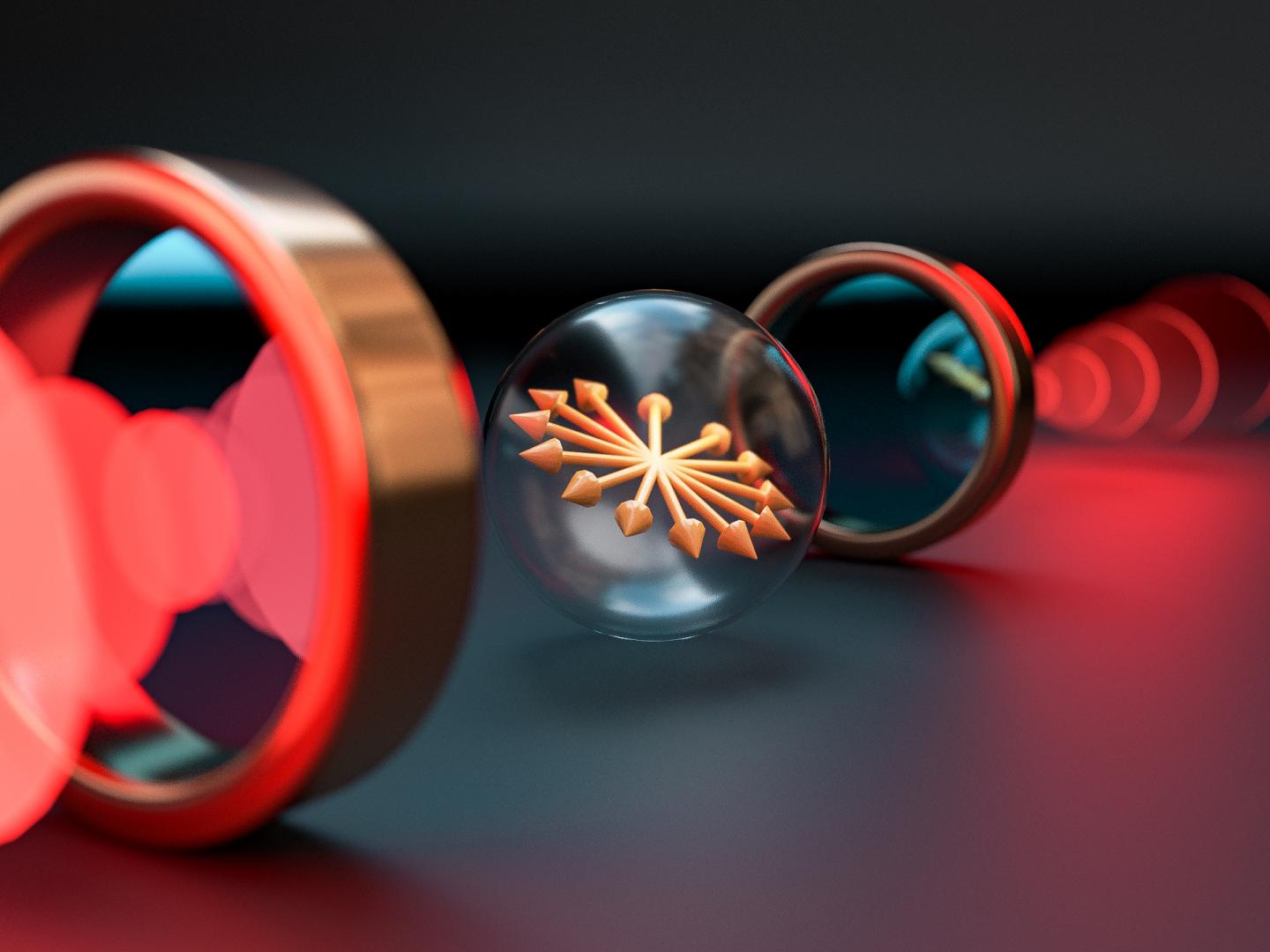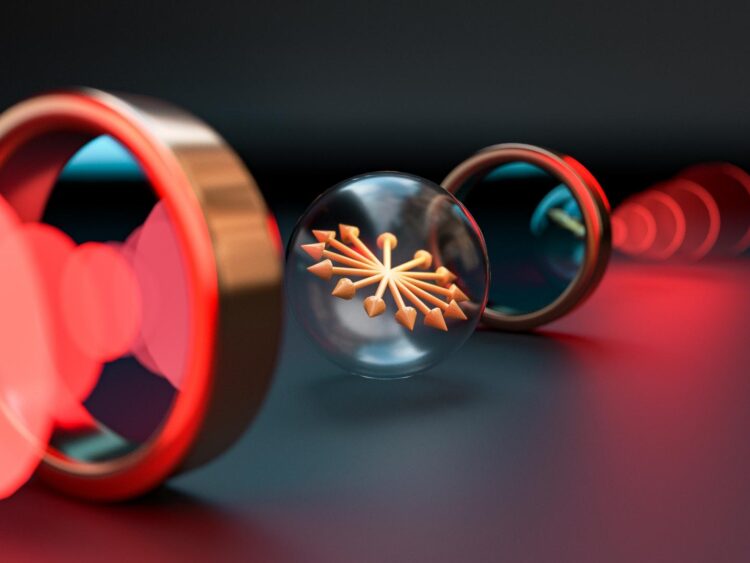A research team from Garching and Vienna discovered a remarkable echo effect – it offers exciting new possibilities for working with quantum information

Credit: C. Hohmann /MCQST
Small particles can have an angular momentum that points in a certain direction – the spin. This spin can be manipulated by a magnetic field. This principle, for example, is the basic idea behind magnetic resonance imaging as used in hospitals. An international research team has now discovered a surprising effect in a system that is particularly well suited for processing quantum information: the spins of phosphorus atoms in a piece of silicon, coupled to a microwave resonator. If these spins are cleverly excited with microwave pulses, a so-called spin echo signal can be detected after a certain time – the injected pulse signal is re-emitted as a quantum echo. Surprisingly, this spin echo does not occur only once, but a whole series of echoes can be detected. This opens up new possibilities of how information can be processed with quantum systems.
The experiments were carried out at the Walther-Meissner-Institute in Garching by researchers from the Bavarian Academy of Sciences and Humanities and the Technical University of Munich, the theoretical explanation was developed at TU Wien (Vienna). Now the joint work has been published in the journal “Physical Review Letters“.
The echo of quantum spins
“Spin echoes have been known for a long time, this is nothing unusual”, says Prof. Stefan Rotter from TU Wien (Vienna). First, a magnetic field is used to make sure that the spins of many atoms point in the same magnetic direction. Then the atoms are irradiated with an electromagnetic pulse, and suddenly their spins begin to change direction.
However, the atoms are embedded in slightly different environments. It is therefore possible that slightly different forces act on their spins. “As a result, the spin does not change at the same speed for all atoms,” explains Dr. Hans Hübl from the Bavarian Academy of Sciences and Humanities. “Some particles change their spin direction faster than others, and soon you have a wild jumble of spins with completely different orientations”.
But it is possible to rewind this apparent chaos – with the help of another electromagnetic pulse. A suitable pulse can reverse the previous spin rotation so that the spins all come together again. “You can imagine it’s a bit like running a marathon,” says Stefan Rotter. “At the start signal, all the runners are still together. As some runners are faster than others, the field of runners is pulled further and further apart over time. However, if all runners were now given the signal to return to the start, all runners would return to the start at about the same time, although faster runners have to cover a longer distance back than slower ones.”
In the case of spins, this means that at a certain point in time all particles have exactly the same spin direction again – and this is called the “spin echo”. “Based on our experience in this field, we had already expected to be able to measure a spin echo in our experiments,” says Hans Hübl. “The remarkable thing is that we were not only able to measure a single echo, but a series of several echoes.”
The spin that influences itself
At first, it was unclear how this novel effect comes about. But a detailed theoretical analysis now made it possible to understand the phenomenon: It is due to the strong coupling between the two components of the experiment – the spins and the photons in a microwave resonator, an electrical circuit in which microwaves can only exist at certain wavelengths. “This coupling is the essence of our experiment: You can store information in the spins, and with the help of the microwave photons in the resonator you can modify it or read it out,” says Hans Hübl.
The strong coupling between the atomic spins and the microwave resonator is also responsible for the multiple echoes: If the spins of the atoms all point in the same direction in the first echo, this produces an electromagnetic signal. “Thanks to the coupling to the microwave resonator, this signal acts back on the spins, and this leads to another echo – and on and on,” explains Stefan Rotter. “The spins themselves cause the electromagnetic pulse, which is responsible for the next echo.”
The physics of the spin echo has great significance for technical applications – it is an important basic principle behind magnetic resonance imaging. The new possibilities offered by the multiple echo, such as the processing of quantum information, will now be examined in more detail. “For sure, multiple echos in spin ensembles coupled strongly to the photons of a resonator are an exciting new tool. It will not only find useful applications in quantum information technology, but also in spin-based spectroscopy methods”, says Rudolf Gross, co-author and director of the Walther-Meissner-Institute.
###
Contact:
Prof. Stefan Rotter
Institute for Theoretical Physics
TU Wien
Wiedner Hauptstraße 8-10, 1040 Vienna
+43 1 58801 13618
[email protected]
Priv.-Doz. Dr. Hans Huebl
Walther-Meißner-Institut der BAdW
[email protected]
+49 89 289-14204
Media Contact
Florian Aigner
[email protected]
Original Source
https:/
Related Journal Article
http://dx.





